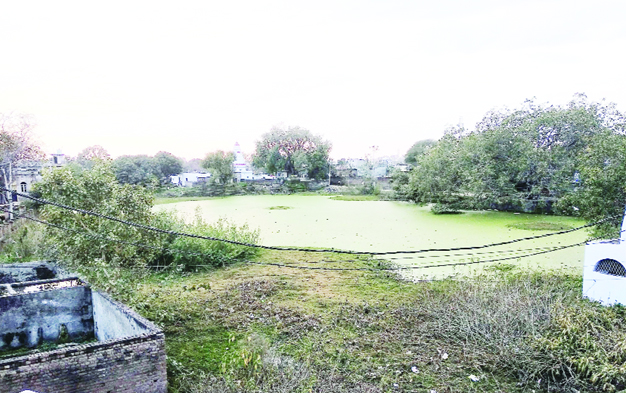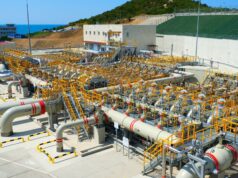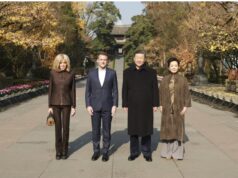Vanishing vintage ponds of Jammu

By Colonel Satish Singh Lalotra
‘If we are to preserve culture, we must continue to create it’……Johan Huizinga.
Water bodies, be they the rivers, ponds, rivulets, lakes and such like natural bounties were the progenitors of human survival in the past and hold true even to this day and date. Almost all great human civilisations had their origin next to some well-known water bodies which shaped the environs in an inalienable way for times to come.
India, China, Iraq, Egypt etc were blessed enough to have some of the most celebrated water bodies in the form of Indus, Huang He (yellow river) , Tigris/Euphrates and Nile respectively around which thrived their civilisations. These civilisations initially a conglomeration of villages later on took the form of a more settled way of life.
Almost all villages had a running source of water on which depended their sheer survival and hence the dire need to protect them became the ‘sine quo non’ of the inhabitants of that very region.
India thrives and is known even today by its countless villages which pulsate around the length and breadth of the country in a way that has defined its denizens for centuries. The north India of our country is no different from the above truth particularly Jammu & Kashmir and Punjab that have over the years been an essential part of our rural life.
The village ponds in countless villages of these two states were the centrality of all things around which thrived all socio- cultural exchanges when the masses came to have their fill of water. Known as ‘Chappar’ or Chappri, talab, talao etc in colloquial language these water bodies over a period of time acquired a distinct name of their own many a time given by the locals of that area and often as a result of attribution of long usage of a particular place which became a ‘byname’ for that village pond.
Something of a similar nature must have occurred at my ancestral place near ‘Ghagwal’ about 45 kms from Jammu towards Pathankot. This summer I happen to go to my ancestral place to have a look of my land that lies astride on both sides and in close proximity to the now being newly built Delhi-Amritsar- Jammu-Katra highway. To my amazement and consternation in equal measure I happen to spot our ancestral pond that was brick lined in good measure and happened to be the only conduit of water source for many villages in and around Ghagwal .
Going by the name of ‘Chanani’ this one century old ancestral pond sadly is now in a derelict state with all sorts of trash and stray animals having made it as their abode. With no water in this water body ‘Chanani’ still has the age old look of massive banyan trees on its banks from which village people used to dive around in the waters of this pond.
Since the area surrounding this water body was arid being a ‘Kandi belt’ to a large extent all the massive mango as well as other shade bearing trees were watered from this pond. My childhood memories are full of these anecdotes when our farm labour working in our fields used to carry water on ‘Banhgi’ or Yoke on their shoulders for multipurpose uses.
But now no longer, which is a sad testimony to the changed times that has wrought havoc on these heritage structures bearing water. A pond was central to the life for centuries catering to the common benefit of the villages; for their cattle to drink, and bathe as well as for the vast humanity to do their routine work involving water usage.
There were more than 3600 ponds of varied dimensions in Jammu region as per a study carried out in the past for the purpose of geo-referenced -UID of each water body. The figure may vary with regards to numbers , due to their present status , degree of encroachment or those altogether undergone a sea change with the onslaught of infra requirements in the UT of Jammu and Kashmir.
It is not that the GOI is oblivious of the importance of maintaining these vintage cum heritage ponds and ‘Bowlis’. Witnessing the sad state of our ancestral pond near Ghagwal prompted me to have a look-see of the legal decrees from the internet that went in the past to protect their very existence. In one such case the Supreme Court of India in ‘Hinchlal Tiwari vs Kamla Devi and Ors (2001) had observed-‘ It is important to notice that the material resources of the community like forests, tanks, ponds, hillocks, mountains etc are nature’s bounty.
They maintain delicate ecological balance. They need to be protected for a proper and healthy environment which enables them to enjoy a quality life which is the essence of the guaranteed right under article 21 of the constitution. The Government, including the revenue authorities, has noticed that a pond if falling into disuse , should have bestowed their attention to develop the same which would , on one hand , have prevented ecological disaster and on the other provided a better environment for the benefit of the public at large.
Such vigil is the best protection against knavish attempts to seek allotment in non-abadi sites’—unquote. In fact the authorities lose sight of the fact that if the ponds and other such water bodies are not protected then this will in turn affect recharge of ground water , rainwater harvesting and soil preservation.
The much publicized ‘Kandi-watershed management’ programme kick started by the erstwhile State Government of Jammu and Kashmir decades ago referred to the comprehensive approach to managing Kandi region starting from Kathua right till Samba .But what happened to the much publicized programme?
Has any visible manifestation of this ‘Kandi-watershed management’ percolated down to the masses? The ‘ KWM’ ( Kandi watershed management’) programme envisaged a slew of methods with some key aspects relating to soil and water conservation, sustainable land use, community participation etc leading ultimately to an integrated approach to ameliorate the cause of the ‘Kandi belt’ people as such.
Have any livelihood improvements been witnessed and attributed to the KWM programme in general area of Kandi region? Aren’t the preservation and care of the vintage cum heritage ponds too a part of the larger scheme of KWM programmes? If yes, then why such a lackadaisical approach by the local as well as UT Government to get their acts together and put this ancestral pond of ours on to the KWM map of J&K?
Or is it left to my extended family and the near and dear ones to put this ancestral pond ‘Chanani’ back on its tracks from which several villages of Ghagwal bloc drew their sustenance decades ago? Sadly enough a quick round of my ancestral land astride the the NH 1A as well as the ‘Bein river’ near Ghagwal revealed a desolate situation wherein the local farmers have left most of their fields as ‘fallow’ ( uncultivated) due to lack of water. So much for our efforts to revive and sustain the vintage cum heritage water bodies of J&K.
Resources like air, water, and forests have such great importance to the people as a whole that the same cannot be subject to private ownership. Hence my urgent plea in the above paragraphs as stated that it is the most opportune moment for state intervention to preserve the heritage ponds and wells. These are the gifts of the nature and should be readily made available to the people besides being essential for the protection of the environment.
Unfortunately. these have been allowed to turn into habitations, by none other than those who are assigned to protect them. Revenue records pertaining to them have been grossly tempered with and parted away to unscrupulous elements on myriad considerations.
The land mafia along with active connivance of some indifferent officials in the last few years have been solely responsible for this sordid affairs of state. Rapid urbanization along with availability of potable tap water and a slew of other measures are other reasons for the heritage ponds going the dog’s way. Residents in the worst water scarce Samba district have preserved the ponds in the ‘Rahya-Suchani’ villages.
However the rain fed ponds in several villages go dry during the peak summers. To address the above mentioned crisis , a multifaceted approach is required with some of the following actions in the right earnest —
* Strengthening enforcement— Authorities must ensure that encroachments are promptly identified and removed. This requires not only issuing notices but also taking legal action against violators.
* Community engagement— Reviving the communal spirit of maintaining these ancient ponds . Local farmers and communities must be involved in monitoring and upkeep of these water bodies.
* Public awareness campaigns— Educating the public about the importance of preserving water bodies and the consequences of encroachments can foster a sense of responsibility and collective action.
* Sustainable agricultural practices-Encouraging practices that conserve water and maintain soil health can reduce the pressure on irrigation systems and enhance the longevity of these heritage ponds.
Actually we have very little leeway left now to retrieve, preserve, protect and improve upon these water bodies, the natural bounties that were bestowed upon us by the Almighty. We have to make sure that the practices that are going on unchecked as mentioned by me above with the administration too sleeping, in defiance to the law of nature and unambiguous orders from the Supreme Court of India not to fiddle with, to sell and make money out of ponds in utter disregard to the water needs is brought down with a heavy hand.
With ground water already tottering at a dangerous level of more than 350 feet in the general area of ‘Kandi Belt’ of Jammu region and the so called Kandi watershed management programme coming a cropper , is it any brainer that there is a dire need to once again revive the ancient cum heritage village water bodies to include ponds, wells, Bowlis etc ?
Had I not cast a glance at our century old ancestral pond of ‘Chanani’ few days back while going over my ancestral land , may be this write up would have never seen the light of the day. It would be a perfect case study for the naturalists, conservationists and the ilk residing in J&K to put their heads together to make sure that such priceless heritage icons are not left to their fate and the guilty are brought to book for their monumental neglect.
The words of Aesop ( 620-564 BC) ring true even today—‘ We hang the petty thieves and appoint the great ones to public office’…unquote.




